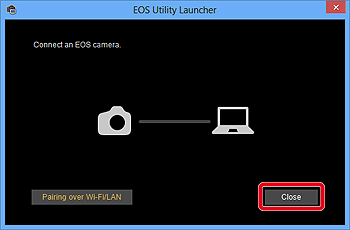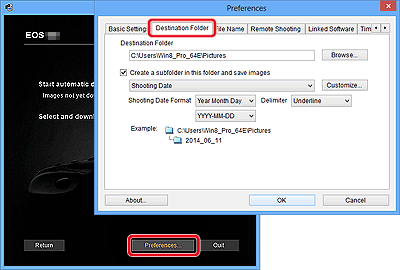- Canon Community
- Discussions & Help
- Camera
- EOS DSLR & Mirrorless Cameras
- Re: Only some pictures are uploading from Canon T5...
- Subscribe to RSS Feed
- Mark Topic as New
- Mark Topic as Read
- Float this Topic for Current User
- Bookmark
- Subscribe
- Mute
- Printer Friendly Page
Only some pictures are uploading from Canon T5I
- Mark as New
- Bookmark
- Subscribe
- Mute
- Subscribe to RSS Feed
- Permalink
- Report Inappropriate Content
02-26-2017 12:21 PM
So I plugged my camera in and uploaded the pictures as usual.. when I was going through the uploaded pictures I couldn't find my favorite ones for the life of me..!
Most of the pics uploaded and there was about 20 that didn't. Is it a setting in the camera or on my computer?
I use windows 10 & my pics upload through the "Photos" app.
- Mark as New
- Bookmark
- Subscribe
- Mute
- Subscribe to RSS Feed
- Permalink
- Report Inappropriate Content
02-26-2017 03:58 PM
If you didn't delete any files in camera then they should all still be on the SD card. If something happened during the upload from camera try uploading directly from the SD card using a card reader.
Most experienced users on the forum recommend using a card reader always.
Conway, NH
1D X Mark III, M200, Many lenses, Pixma PRO-100, Pixma TR8620a, Lr Classic
- Mark as New
- Bookmark
- Subscribe
- Mute
- Subscribe to RSS Feed
- Permalink
- Report Inappropriate Content
02-26-2017 08:44 PM
Hello gdawg,
Downloading all images that have not been transferred to the computer
- Set the camera's Auto Power Off settings to [Off] or [Disable] before making the connection.
- For more information on connecting the camera to a computer, please refer to the instruction manual included with the camera.
2. Set the camera's power to [ON].
NOTE
- Windows 8: Right-click on the [Start] screen, and then click [All Programs] displayed on the lower right of the screen. [EOS Utility] will be displayed on the [Apps] screen.
- Windows 8.1: Click on the bottom left of the [Start] screen to display the [Apps] screen, and then click [EOS Utility].
- Mac OS X: Click the [EOS Utility] icon on the Dock.
IMPORTANTIf you start EOS Utility Ver. 3.2 before connecting the camera to the computer, the [EOS Utility Launcher] screen (shown in the example image below) will be displayed. In this case, please click [Close], and connect the camera to the computer after the window has closed.
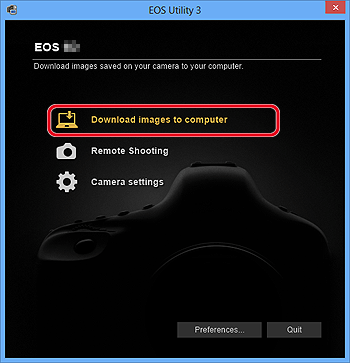
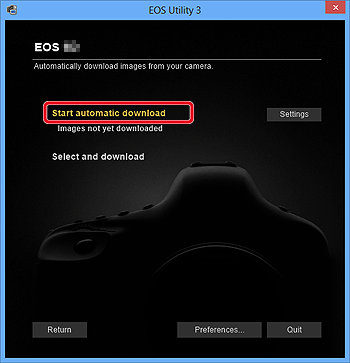
NOTEBy default, the downloaded images are sorted into folders by their shooting date, and are saved in the [Pictures] folder on the computer. If you wish to change the destination for the downloaded images, click [Preferences] and specify the settings in the dialog box.
If you click [Select and download], you can select the images you want and download them to your computer from the cameras memory card. For the details, please see the "Downloading selected images" section below.
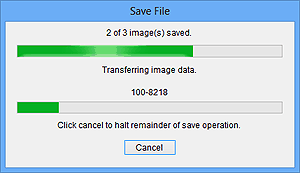
NOTEIf you wish to edit images using Digital Photo Professional or ImageBrowser EX, refer to the individual software instruction manuals.
Downloading selected images
- Set the camera's Auto Power Off settings to [Off] or [Disable] before making the connection.
- For more information on connecting the camera to a computer, please refer to the instruction manual included with the camera.
NOTE
- Windows 8: Right-click on the [Start] screen and click on [All apps] displayed at the bottom right of the screen to display the [Apps] screen. Then, click [EOS Utility].
- Windows 8.1: Click on the bottom left side of the [Start] screen to display the [Apps] screen, and then click [EOS Utility].
- Mac OS X: Click the [EOS Utility] icon on the Dock.

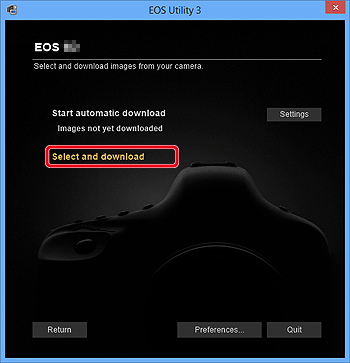
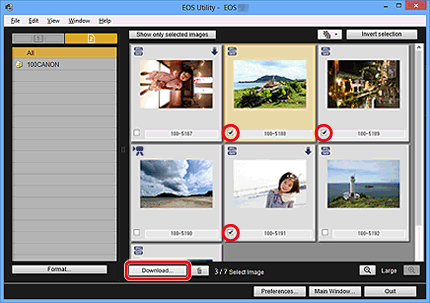
NOTE
- The [
] icon is displayed in the upper-left corner of movie files.
- You can click the [
] button to sort the images with various conditions and choose images you want to download.
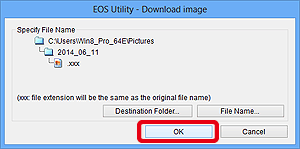
NOTEBy default, the downloaded images are sorted into folders by their shooting date, and are saved in the [Pictures] folder on the computer.
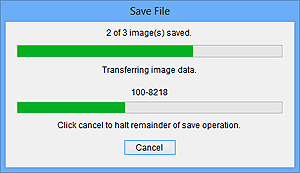
When all the selected images are downloaded, Digital Photo Professional starts automatically and the images that have been downloaded will be displayed.
01/14/2025: Steps to resolve still image problem when using certain SanDisk SD cards with the Canon EOS R5 Mark II
12/18/2024: New firmware updates are available.
EOS C300 Mark III - Version 1..0.9.1
EOS C500 Mark II - Version 1.1.3.1
12/13/2024: EOS Webcam Utility Pro V2.3b is now available to support Windows on ARM PC users.
12/05/2024: New firmware updates are available.
EOS R5 Mark II - Version 1.0.2
11/14/2024: Windows V 2.3a installer for EOS Webcam Utility Pro is available for download
11/12/2024: EOS Webcam Utility Pro - Version 2.3 is available
09/26/2024: New firmware updates are available.
EOS R6 Mark II - Version 1.5.0
08/09/2024: Firmware update available for RC-IP1000 - Version 1.1.1
08/08/2024: Firmware update available for MS-500 - Version 2.0.0
- How to disable automatic orientation of the pictures ? in EOS DSLR & Mirrorless Cameras
- Lookin for EOS R10 lenses for concert phtography mostly in EF & RF Lenses
- EOS 7D Mark II - How to Use Smartphone as Viewfinder in EOS DSLR & Mirrorless Cameras
- What a difference..: Monitor recommendation for photo editing in Camera Accessories
- EOS R50 Lens recommendations for Kennedy Space Center, Daytona 500 in EF & RF Lenses
Canon U.S.A Inc. All Rights Reserved. Reproduction in whole or part without permission is prohibited.
